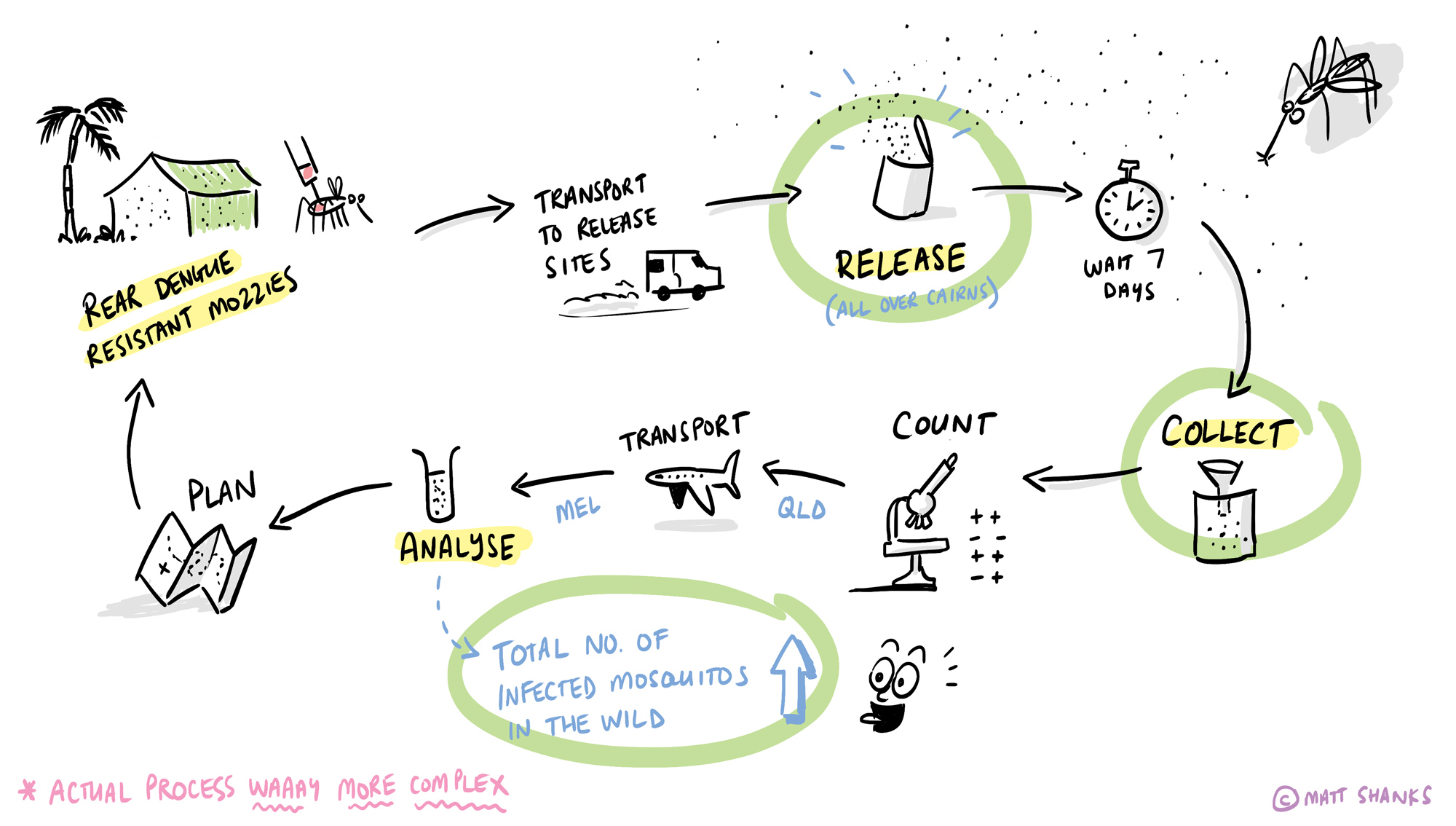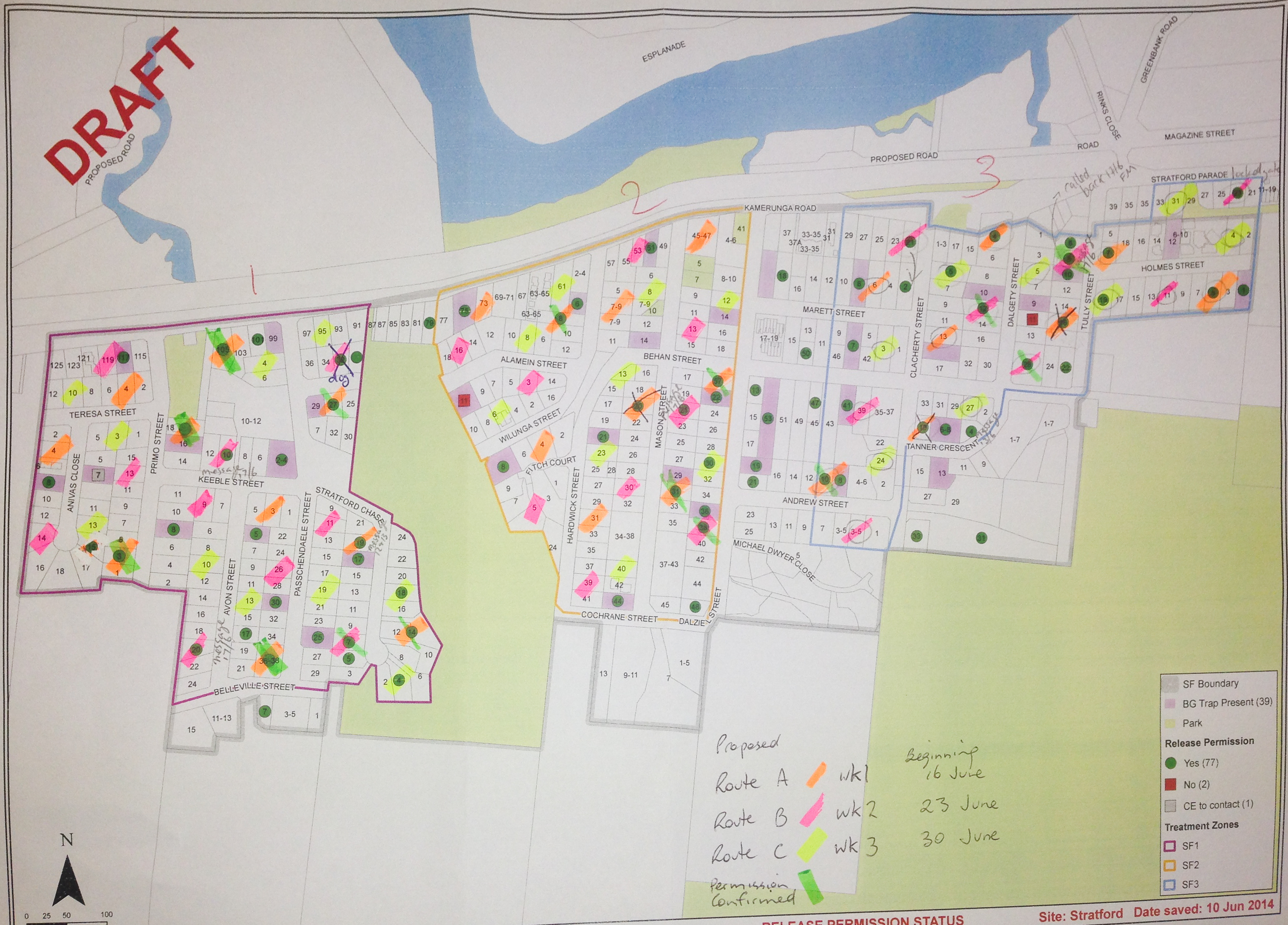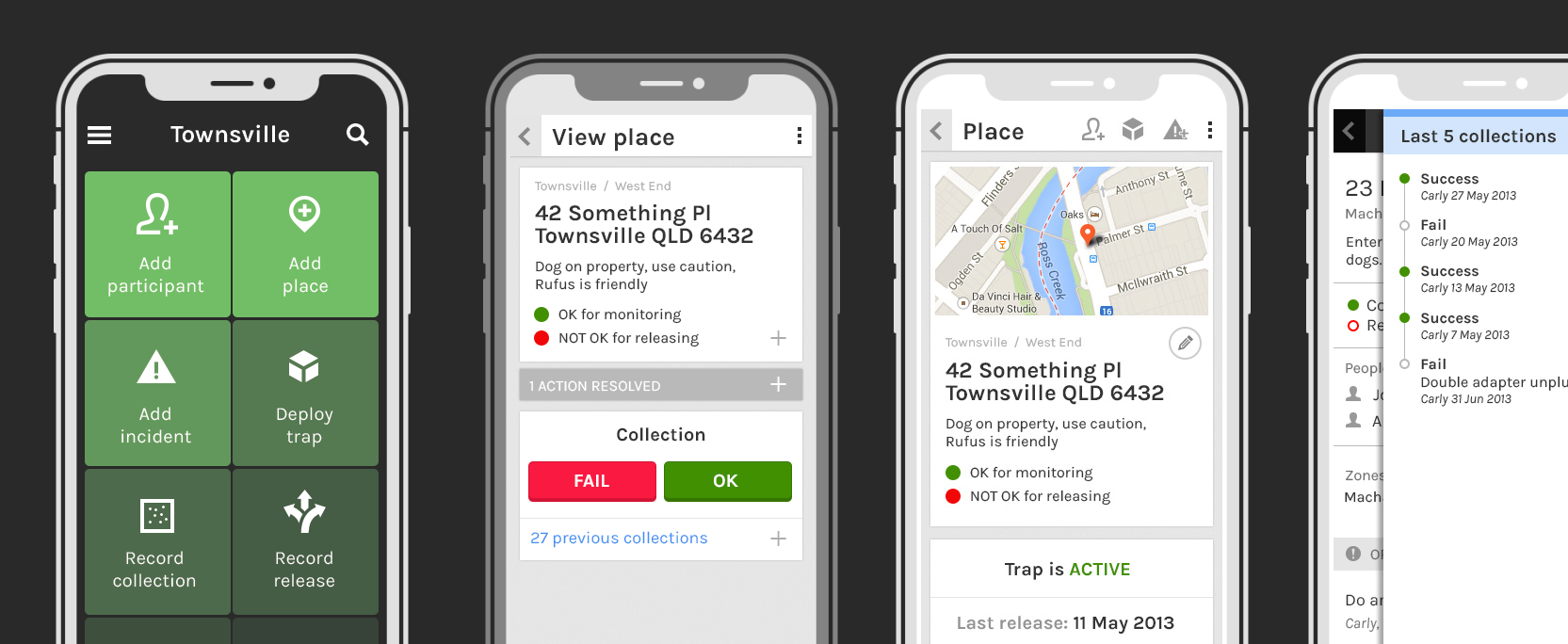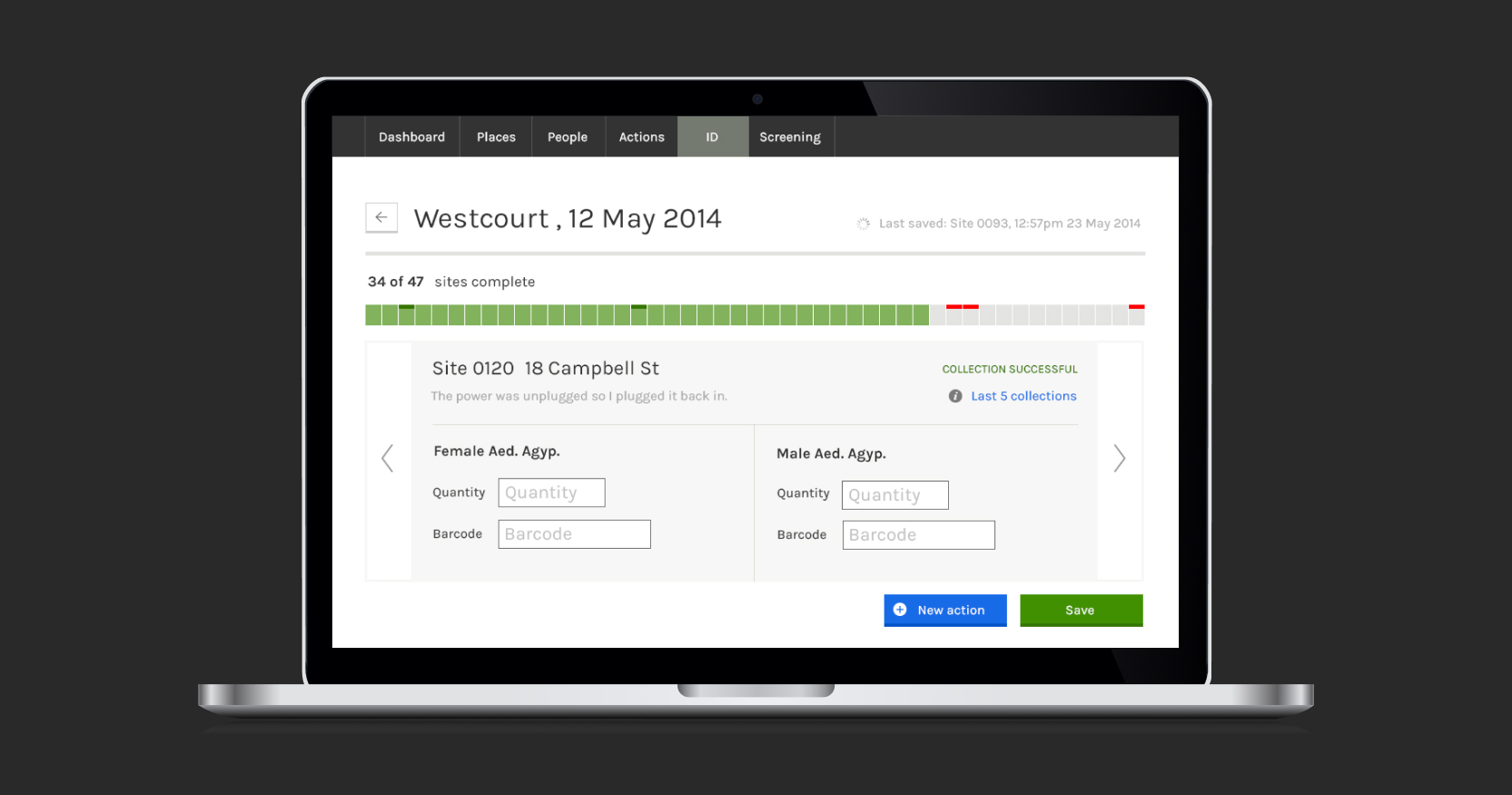Eliminate Dengue (now called The World Mosquito Program) aims to help communities around the world prevent the spread of mosquito-borne disease. Using ground-breaking bacterial implant technology in wild mosquito populations, the program that was trialled in Australia has now scaled globally and is operating in over 11 countries and affecting hundreds of thousands of lives.
Design methods
To achieve a vision of such ambition requires teams of specialists working together rigorously across the East Coast of Australia – each playing their role in the complicated process of breeding, releasing, & capturing mosquitos, as well as analysing the data. With a digital tool required to facilitate the flow of information between all parties, it was important to ‘ride-along’ with each user group to understand the day-to-day tasks each had to complete.

One of the challenges of working with experts is that, well, they believe they're experts; and they are. They are exceptional problem solvers in their domain of expertise and these experts created some incredibly robust systems to help them complete their work. What could 'design' possibly improve upon?
No one likes change and most people are proud of the processes they’ve designed for their own work. Showing them that it could be even better requires building trust and rapport first. To say, I’m on your side, let’s work together. And for them to respond with, OK, let’s do this.

–GIS specialist and project field officer
It can sometimes be difficult to insert a tool or process into a complex system without disrupting the regular cadences that the teams and systems have set up to do their everyday work. Matt facilitated an iterative approach to a build, test, release cycle to answer fundamental questions quickly – e.g. Would the network connection across North East Australia be reliable enough for the use of mobiles in the field?

Working alongside key user groups, the product team slowly but surely built the riskiest pieces of the platform first, checking the solution’s effectiveness regularly to ensure that we weren’t designing ourselves into a corner we couldn’t get out of.
A lightning fast, purpose-built screen for recording incidence of Wolbachia spread across mosquito populations. The screen design not only increased the speed at which entomologists could record information, but it did it a much greater accuracy then their previous systems.

In short, the releasing team saw an immediate doubling of their release efficiency and the data team reported higher accuracy and faster turnaround of the analysis of the data. This in turn meant that the field team could plan routes faster, more efficiently, and, ultimately, handle higher volumes of data without having to scale the number of people working on the project.

Tracker, as it became affectionately known, provided a foundational and functional proof-of-concept for a data tool that could be easily adapted beyond Australian shores to countries with vastly higher incidence of dengue fever.
– Jack Brown-Kenyon, GIS specialist

A 20+ year collection of design artefacts

Australian Red Cross

Covidence

World Mosquito Project

Bonigi Monitoring

Chargefox

NSW Dept. of Primary Industries

Department of Climate Change, Energy, Environment, and Water

Cogent

GoodHuman

WWF